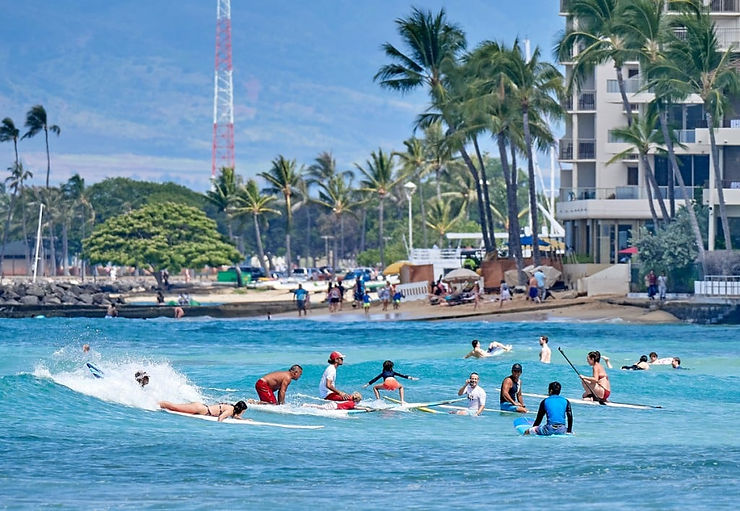
Surfing, often called the "Sport of Kings," offers a unique blend of adventure, physical activity, and a profound connection to the sea. Whether you've always dreamed of riding the waves or you're simply looking for a thrilling new hobby, learning to surf can be an incredibly rewarding experience. In this introductory guide, we'll dive into the basics of surfing, from choosing the right beginner-friendly surf spot to mastering your first pop-up. So, grab your board, don your wetsuit, and let's get started on this exciting journey.
**1. Gear Up:**
Before you hit the waves, it's essential to have the right gear. You'll need a surfboard (a soft-top, beginner-friendly board is best), a wetsuit appropriate for the water temperature, and a leash to keep your board close by.
**2. Choose the Right Spot:**
Not all surf breaks are created equal, and as a beginner, you'll want to find a beach with gentle, rolling waves. Look for beginner-friendly surf spots known for their forgiving waves, such as Waikiki Beach in Hawaii, or popular surf schools worldwide.
**3. Learn Surf Etiquette:**
Surfing comes with a code of conduct that promotes safety and respect in the lineup. Understand the right of way rules, respect the locals, and always prioritize safety.
**4. Master the Pop-Up:**
The pop-up is the fundamental move that gets you from lying on your board to standing up. Practice this motion on the beach before heading into the water. Remember, it's all about balance and fluidity.
**5. Safety First:**
Safety is paramount in surfing. Learn how to identify and escape rip currents, be aware of your surroundings, and pay attention to weather and tide conditions.
**6. Timing is Everything:**
Catching a wave is all about timing. Watch the sets, get a feel for the rhythm, and when you see a wave approaching, start paddling vigorously.
**7. Start Small:**
As a beginner, don't be discouraged if you spend more time wiping out than riding. Start with the small, broken waves in the whitewater, and gradually work your way to catching unbroken waves as your skills improve.
**8. Balance is Key:**
Maintaining balance on the board is essential. Keep your weight centered, your knees slightly bent, and your eyes focused on the horizon.
**9. Take a Lesson:**
Consider taking a lesson from a certified surf instructor. They can provide invaluable guidance, safety tips, and feedback on your technique.
**10. Enjoy the Journey:**
Surfing is not just about conquering the waves; it's about immersing yourself in the ocean's beauty and energy. Take time to appreciate the surroundings, the feel of the water, and the sense of freedom that comes with riding the waves.
Learning to surf is an exciting and challenging adventure, but the rewards are worth every wipeout. It's not just a sport; it's a lifestyle that connects you with nature, fosters physical fitness, and offers endless opportunities for exploration and self-discovery. So, grab your board, hit the waves, and get ready for an unforgettable journey as you become one with the ocean.
Comments